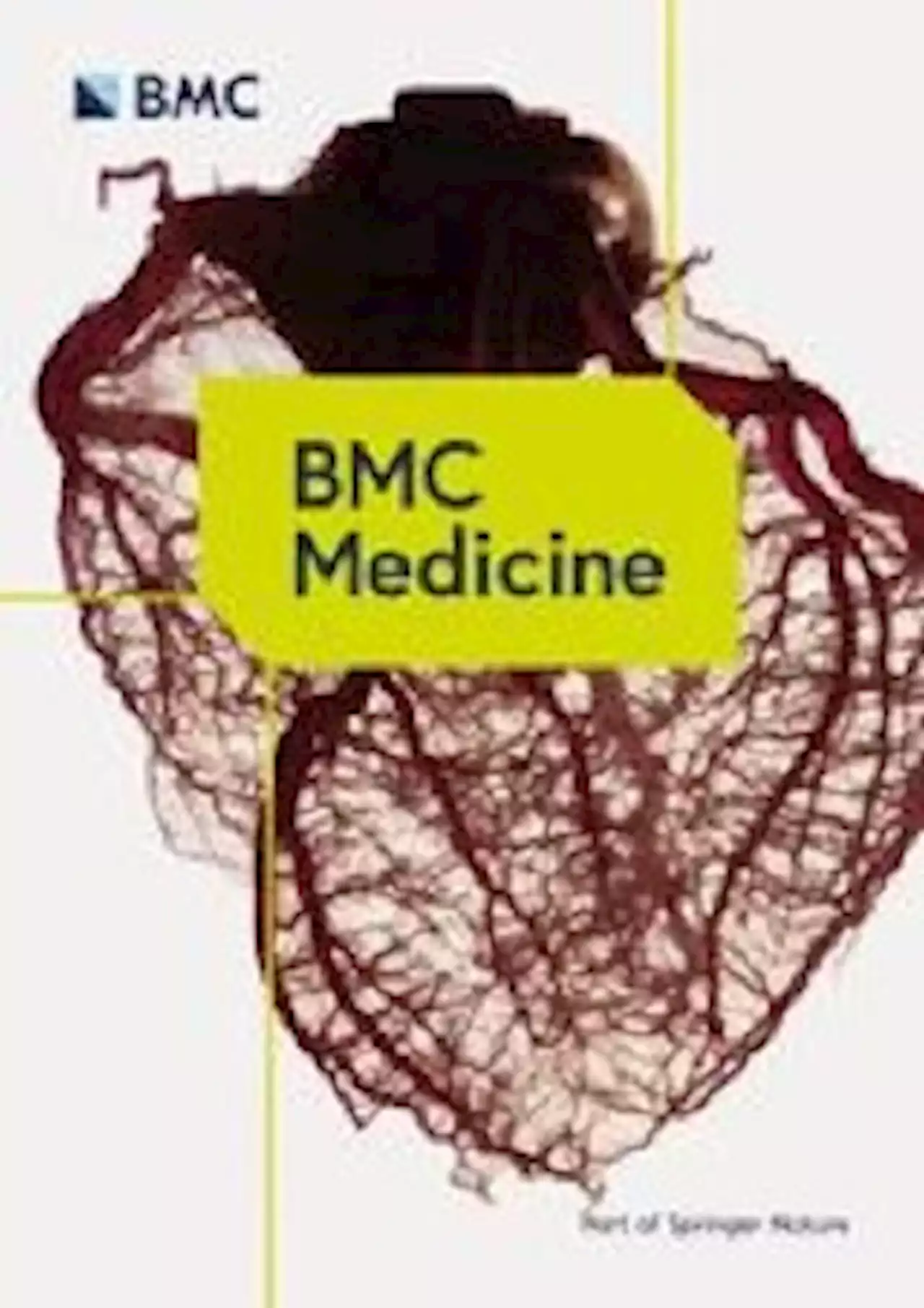An Editorial published in BMCMedicine addresses the neglected awareness of the currently incurable chronic Chagas Disease and urges for it to be on the global agenda as its long-term consequence will continue to burden global healthcare systems.
Neglected tropical diseases generally most impact the poor in low-income regions. The “neglected” aspect of NTDs refers to their absence from the global health agenda resulting in limited funding from international agencies. A focused and concerted effort in improving the quality of healthcare in the most NTD-affected regions could have a huge positive impact in improving lives, yet these efforts are often hampered by a low level of awareness.
A successful parasite is one which can reproduce for as long a time as possible without immediately killing the host. As such, mortality from chronic CD is usually caused by long-term effects on major organs. Chronic CD typically impacts the heart and/or gastroenterological system. Heart disease occurs in 30–40% of chronic Chagas cases. Chronic myocarditis, increased cardiomyopathy, cardiomegaly and thinning of the ventricle walls have been observed in autopsy.
Benznidazole or Nifurtimox are treatments which crucially, if utilised during the acute infection phase, are effective in complete cure of the disease. Beyond this crucial early timeframe, both the chronic infestation and subsequent effects of chronic disease are much more difficult to treat and essentially incurable. Research into therapies which can eradicate the disease in its chronic phase are ongoing but as of yet are not effective.
United Kingdom Latest News, United Kingdom Headlines
Similar News:You can also read news stories similar to this one that we have collected from other news sources.
 Change in habitual intakes of flavonoid-rich foods and mortality in US males and females - BMC MedicineBackground Higher baseline intakes of flavonoid-rich foods and beverages are associated with a lower risk of chronic disease and mortality in observational studies. However, associations between changes in intakes and mortality remain unclear. We aimed to evaluate associations between 8-year changes in intakes of (1) individual flavonoid-rich foods and (2) a composite measure (termed the ‘flavodiet’) of foods and beverages that are known to be main contributors to flavonoid intake and subsequent total and cause-specific mortality. Methods We evaluated associations between 8-year changes in intakes of (1) individual flavonoid-rich foods and (2) a novel ‘flavodiet’ score and total and cause-specific mortality. We included 55,786 females from the Nurses’ Health Study (NHS) and 29,800 males from the Health Professionals Follow-up Study (HPFS), without chronic disease at baseline in our analyses. Using multivariable-adjusted Cox proportional hazard models, we examined associations of 8-year changes in intakes of (1) flavonoid-rich foods and (2) the flavodiet score with subsequent 2-year lagged 6-year risk of mortality adjusting for baseline intakes. Data were pooled using fixed-effects meta-analyses. Results We documented 15,293 deaths in the NHS and 8988 deaths in HPFS between 1986 and 2018. For blueberries, red wine and peppers, a 5%, 4% and 9% lower risk of mortality, respectively, was seen for each 3.5 servings/week increase in intakes while for tea, a 3% lower risk was seen for each 7 servings/week increase [Pooled HR (95% CI) for blueberries; 0.95 (0.91, 0.99); red wine: 0.96 (0.93, 0.99); peppers: 0.91 (0.88, 0.95); and tea: 0.97 (0.95, 0.98)]. Conversely, a 3.5 servings/week increase in intakes of onions and grapefruit plus grapefruit juice was associated with a 5% and 6% higher risk of total mortality, respectively. An increase of 3 servings per day in the flavodiet score was associated with an 8% lower risk of total mortality [Pooled HR: 0.92 (0.89, 0.96)], and
Change in habitual intakes of flavonoid-rich foods and mortality in US males and females - BMC MedicineBackground Higher baseline intakes of flavonoid-rich foods and beverages are associated with a lower risk of chronic disease and mortality in observational studies. However, associations between changes in intakes and mortality remain unclear. We aimed to evaluate associations between 8-year changes in intakes of (1) individual flavonoid-rich foods and (2) a composite measure (termed the ‘flavodiet’) of foods and beverages that are known to be main contributors to flavonoid intake and subsequent total and cause-specific mortality. Methods We evaluated associations between 8-year changes in intakes of (1) individual flavonoid-rich foods and (2) a novel ‘flavodiet’ score and total and cause-specific mortality. We included 55,786 females from the Nurses’ Health Study (NHS) and 29,800 males from the Health Professionals Follow-up Study (HPFS), without chronic disease at baseline in our analyses. Using multivariable-adjusted Cox proportional hazard models, we examined associations of 8-year changes in intakes of (1) flavonoid-rich foods and (2) the flavodiet score with subsequent 2-year lagged 6-year risk of mortality adjusting for baseline intakes. Data were pooled using fixed-effects meta-analyses. Results We documented 15,293 deaths in the NHS and 8988 deaths in HPFS between 1986 and 2018. For blueberries, red wine and peppers, a 5%, 4% and 9% lower risk of mortality, respectively, was seen for each 3.5 servings/week increase in intakes while for tea, a 3% lower risk was seen for each 7 servings/week increase [Pooled HR (95% CI) for blueberries; 0.95 (0.91, 0.99); red wine: 0.96 (0.93, 0.99); peppers: 0.91 (0.88, 0.95); and tea: 0.97 (0.95, 0.98)]. Conversely, a 3.5 servings/week increase in intakes of onions and grapefruit plus grapefruit juice was associated with a 5% and 6% higher risk of total mortality, respectively. An increase of 3 servings per day in the flavodiet score was associated with an 8% lower risk of total mortality [Pooled HR: 0.92 (0.89, 0.96)], and
Read more »
 A proactive diabetes review model: from concept to nurse-led research - On MedicineFor International Nurses Day 2023, Mrs Andrea K Lake discusses her route into research and the PREP-D feasibility study of the effect of proactive diabetes specialist nurse reviews of patients with diabetes in hospital, registered at the ISRCTN registry.
A proactive diabetes review model: from concept to nurse-led research - On MedicineFor International Nurses Day 2023, Mrs Andrea K Lake discusses her route into research and the PREP-D feasibility study of the effect of proactive diabetes specialist nurse reviews of patients with diabetes in hospital, registered at the ISRCTN registry.
Read more »
 Putting race back on the agendaPutting race back on the agenda On the eve of The_TUC's BlackWorkersConference, Kate Bell kategobell says the union movement is committed to anti-racism
Putting race back on the agendaPutting race back on the agenda On the eve of The_TUC's BlackWorkersConference, Kate Bell kategobell says the union movement is committed to anti-racism
Read more »
 The Ancient Roots of PsychotherapyThe healing of the mind may be the oldest branch of medicine, writes Kay Redfield Jamison
The Ancient Roots of PsychotherapyThe healing of the mind may be the oldest branch of medicine, writes Kay Redfield Jamison
Read more »
Sainsbury’s boss: We are not profiting from high pricesSupermarkets have been accused of 'greedflation' - putting prices up to bolster profits.
Read more »
 Association between periodontitis and osteoporosis in United States adults from the National Health and Nutrition Examination Survey: a cross-sectional analysis - BMC Oral HealthObjective This cross-sectional study aimed to investigate the association between periodontitis and osteoporosis among US adults as well as the subgroup of menopausal women. Background Periodontitis and osteoporosis are both chronic inflammatory diseases characterized by local or systemic bone resorption. Since they share many risk factors, and the significant decrease in estrogen along with menopause is unfavorable for both diseases, it’s reasonable to assume that there exists some links between the two diseases, especially during the menopause. Methods We analyzed data from the National Health and Nutrition Examination Survey (NHANES) 2009–2010 and 2013–2014. Periodontitis (defined according to the CDC/AAP definition) and osteoporosis (assessed by the dual-energy radiation absorptiometry) data were available for 5736 participants, and 519 subjects were enrolled in the subgroup of menopausal women aged 45–60 years old. We used binary logistic regression analysis to examine the association between the two diseases both in crude and fully adjusted model. Results In the fully adjusted model, osteoporosis was significantly associated with an increased risk of periodontal disease (OR:1.66, 95% CI: 1.00–2.77) in the whole population. As to the subgroup of menopausal women, osteoporosis group had an adjusted OR of 9.66 (95% CI: 1.13–82.38) for developing severe periodontitis in the fully adjusted model. Conclusions Osteoporosis is significantly associated with periodontitis and the association is even more pronounced in menopausal women with severe periodontitis.
Association between periodontitis and osteoporosis in United States adults from the National Health and Nutrition Examination Survey: a cross-sectional analysis - BMC Oral HealthObjective This cross-sectional study aimed to investigate the association between periodontitis and osteoporosis among US adults as well as the subgroup of menopausal women. Background Periodontitis and osteoporosis are both chronic inflammatory diseases characterized by local or systemic bone resorption. Since they share many risk factors, and the significant decrease in estrogen along with menopause is unfavorable for both diseases, it’s reasonable to assume that there exists some links between the two diseases, especially during the menopause. Methods We analyzed data from the National Health and Nutrition Examination Survey (NHANES) 2009–2010 and 2013–2014. Periodontitis (defined according to the CDC/AAP definition) and osteoporosis (assessed by the dual-energy radiation absorptiometry) data were available for 5736 participants, and 519 subjects were enrolled in the subgroup of menopausal women aged 45–60 years old. We used binary logistic regression analysis to examine the association between the two diseases both in crude and fully adjusted model. Results In the fully adjusted model, osteoporosis was significantly associated with an increased risk of periodontal disease (OR:1.66, 95% CI: 1.00–2.77) in the whole population. As to the subgroup of menopausal women, osteoporosis group had an adjusted OR of 9.66 (95% CI: 1.13–82.38) for developing severe periodontitis in the fully adjusted model. Conclusions Osteoporosis is significantly associated with periodontitis and the association is even more pronounced in menopausal women with severe periodontitis.
Read more »
